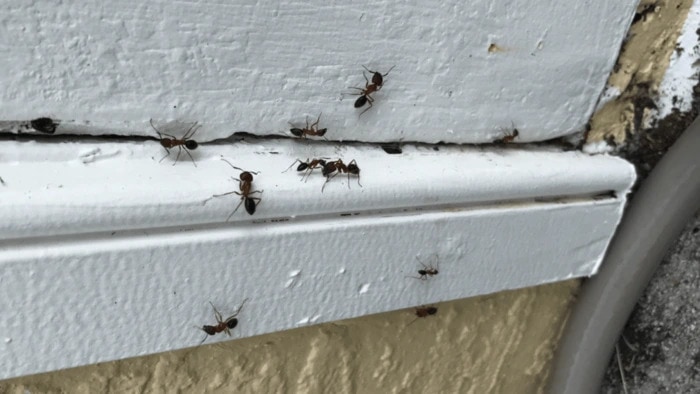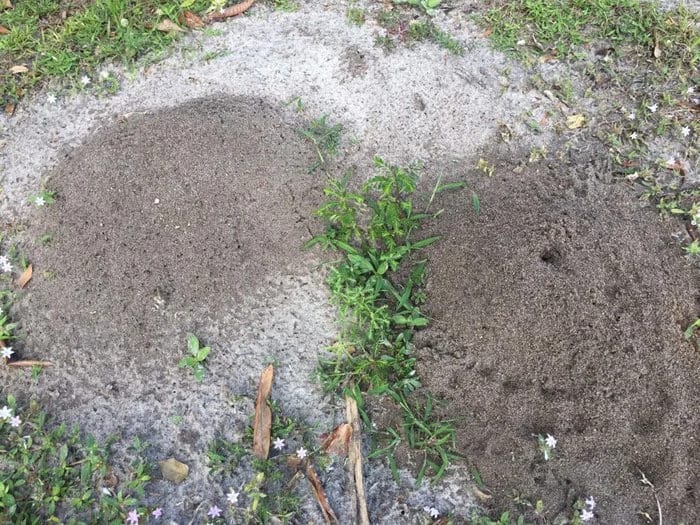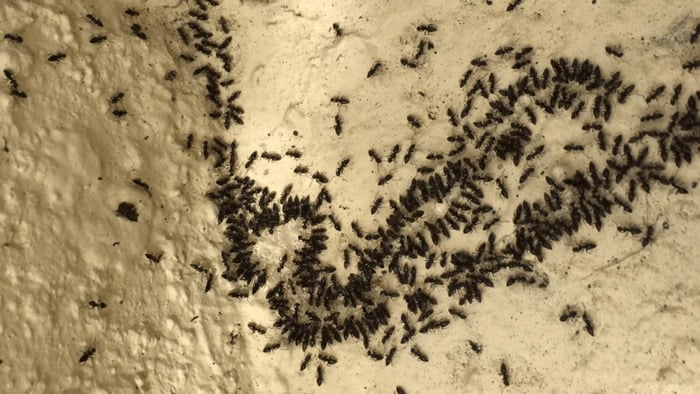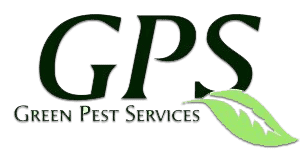Florida Ant Identification Guide
Pest Control Exterminators in Port St Lucie
The most common ants in Florida requiring Pest Control Services
* Denotes the ability to sting
- Big Headed Ants
- Carpenter Ants
- Fire Ants*
- Ghost Ants/Sugar Ants
- Pharaoh Ants
- Twig Ants*
- White Footed Ants
- Velvet Ants/Cow Killer Ants*
Below is a guide to the various species of ants in Florida, how you can identify them, whether or not they bite, and information on controlling them naturally or organically.
Big Headed Ants
Big-Headed Ants (Pheidole megacephala) have long been a major pest in Africa and Australia, but do to human activity inadvertently distributing them around the world, they have recently become a serious pest control problem in South Florida. These reddish-brown ants are easily mistaken for FIRE ANTS. They are most easily be distinguished by looking closely at the size of individual ants. Fire Ants exhibit a wide range of sizes (polymorphic) within the same colony. While Big Headed Ants are also polymorphic, they are generally only two sizes, one of which (the soldier) displays their characteristically large head. Another distinguishing factor between these two ants is the BHA does not possess the ability to sting, though you will not want to get close enough to find out which ant you are dealing with using this method. Big Headed Ants have massive interconnected colonies that can span across multiple properties. This can make control much more difficult. Individuals themselves are susceptible to common insecticides but the sheer number of an invading colony means most chemical applications are not effective at gaining control. Recently, Big Headed Ants seem to be displacing Fire Ants large parts of southern Florida, though they certainly have not eliminated Fire Ants altogether. In Port Saint Lucie, Fire Ants are still common in the Torino area (34986), and both species are present in Tradition (34987). In Martin County, Fire Ants still are the predominant ants in Palm City (34990) while BHA appears to do better in more urbanized areas of Stuart and Jensen Beach.

Can They be Controlled Naturally or Organically?
Oftentimes, yes. Though organic and natural insecticides have their limits, there are pests and situations where these products can be effects. Mineral-based baits can provide control of Big Headed Ants if the right products are employed. BHA is a protein or grease ant that prefer to feed on protein-rich foods. Common ant baits products that are liquid or gel are often sugar based and unlikely to be effective on this species of ant. Another factor necessary for success in dealing with Big Headed Ants is to bear in mind a large number of individuals present. A small amount of bait is likely to kill only a small number of ants.
Green Pest Services has years of experience in providing affordable pest control services in Stuart and Port St Lucie. We specialize in resolving pests problems in the least toxic and most environmentally friendly way wherever possible. We are experts at ant control and top-rated on consumer review sites.
Carpenter Ants
Carpenter Ants (Camponotus floridanus) are similar to their cousins the Big-Headed Ant and Fire Ants in that they prefer protein to carbohydrate-based foods. They will, however, feed on both. The species of Carpenter Ant found in South Florida does not eat wood either. This is understandably a common misconception. They will, however, nest inside the rotten wood and even takeover termite galleries, attacking the termites, consuming their eggs and adapting their home inside of the wood. Not the ideal guest if you’re a termite. Carpenter Ants are a common pest problem in our area though they are well behind Ghost Ants, and Big-Headed Ants in terms of their importance in the pest control industry. Because of their large size and the tendency to be most active at night and early morning, they can be quite alarming whenever they are found in the home. Carpenter Ants love to nest inside of attics and underneath homes, often making it difficult to find their nest. If the nest can be located a simply spray with any common pesticide should work well. Should you decide to kill the nest yourself, however, be careful. Carpenter Ants have a powerful and painful bite.

Can They be Controlled Naturally or Organically?
Oftentimes, yes. Though organic and natural insecticides have their limits, there are pests and situations where these products can be effects. Mineral-based baits can provide control of Big Headed Ants if the right products are employed. BHA is a protein or grease ant that prefer to feed on protein-rich foods. Common ant baits products that are liquid or gel are often sugar based and unlikely to be effective on this species of ant. Another factor necessary for success in dealing with Big Headed Ants is to bear in mind a large number of individuals present. A small amount of bait is likely to kill only a small number of ants.
Green Pest Services has years of experience in providing affordable pest control services in Stuart and Port St Lucie. We specialize in resolving pests problems in the least toxic and most environmentally friendly way wherever possible. We are experts at ant control and top-rated on consumer review sites.
Fire Ants
Fire Ants are found throughout Stuart, Port Saint Lucie, and the surrounding area. Despite their widespread presence in Florida, they are not native. The Red Imported Fire Ant (Solenopsis invicta) was introduced to the United States sometime around the end of World War II from Central or South America. Since that time, they have spread like wildfire (pun intended). Their range within the U.S. now spans from Texas across the Southeast and up into the Mid-Atlantic states. Fire Ants, like Twig Ants, possess the ability to both bite and sting. They have been observed delaying an attack on potential prey until numerous individuals have had an opportunity to gather. People bitten by Fire Ants have noted that by the time they began to bite and sting, there were dozens of them around their feet. This behavior is intentional, increasing the likelihood that they will be able to kill their prey, rather than induce a flight response that a smaller attack might trigger.
Fire Ants are a range in color from red to brown and almost black, typically with their rear abdomen being darker than the body. They range in size from very small to nearly a quarter of an inch in size. This great variation size is perhaps their most distinguishing characteristic from Big Headed Ants, aside from the Fire Ant’s ability to sting. A Fire Ant colony can contain up to 40,000 individuals.

Can They be Controlled Naturally or Organically?
Oftentimes, yes. Though organic and natural insecticides have their limits, there are pests and situations where these products can be effects. Mineral-based baits can provide control of Big Headed Ants if the right products are employed. BHA is a protein or grease ant that prefer to feed on protein-rich foods. Common ant baits products that are liquid or gel are often sugar based and unlikely to be effective on this species of ant. Another factor necessary for success in dealing with Big Headed Ants is to bear in mind a large number of individuals present. A small amount of bait is likely to kill only a small number of ants.
Green Pest Services has years of experience in providing affordable pest control services in Stuart and Port St Lucie. We specialize in resolving pests problems in the least toxic and most environmentally friendly way wherever possible. We are experts at ant control and top-rated on consumer review sites.
Ghost Ants / Sugar Ants
Ghost Ants or Sugar Ants are the most common pest control problem in Florida, including the Treasure Coast. These tiny fast-moving ants are nearly transparent and usually found in the kitchen or bathroom. They may go unnoticed for periods of time but the moment a crumb appears on the counter they will swarm quickly and make their presence known. Because their small bodies are nearly transparent, they are sometimes mistaken for tiny spiders. Ghost Ants have a strong and constant need for water, this is why they are most commonly found in the kitchen and bathrooms. Ghost Ants are a problem for residents of our area year-round. They invade homes in the winter drought season looking for water, and they invade homes in the rainy summer season looking for a dry place to store their eggs. They can set up a nest nearly anywhere since they do not build dirt mound or underground sanctuaries. They will live in potted plants and underneath pots, under unused doormats and inside mulch beds. Ghost Ants can be extremely difficult to control. Like is a cousin and fellow sweet-eating ant, The White Footed Ant, Sugar Ants have interconnected colonies that exchange workers and have multiple queens. This characteristic of Ghost Ants along with their vast numbers makes control much more difficult. They are not native to Florida and the native land is not known. They have been widely distributed in tropical regions around the world by human activity for many decades and therefore their original home remains a mystery. Regardless of their source, ghost ants are here to stay. Luckily for the rest of the country, Ghost Ants are generally only a major pest in Florida, Hawaii, and Puerto Rico.

Can They be Controlled Naturally or Organically?
Ghost Ant (Tapinoma melanocephalum) control can be done in organically or in ways that cater to the chemically sensitive. Boric Acid is a mineral commonly used to control a wide variety of insects. Because Ghost Ants prefer to feed on carbohydrates – the source of their nickname Sugar Ant – it is common to mix boric acid with sweet gels or liquids and to use them as bait. Numerous products of this nature are commercially available over the counter. The best pest control companies in your area will employ a similar method of control, though it is more common to use bait containing synthetic chemicals that natural minerals such as boric acid. Top rated pest control companies such as Green Pest Services will use a variety of methods and products to control Ghost Ants. Exterminators in South Florida should have lots of experience with how to get rid of Ghost Ants.
Pharaoh Ants
Pharaoh Ants (Monomorium pharaonic) were once a common and important pest on the Treasure Coast. Then with the introduction of new pest control products and greater knowledge on the best methods to control pharaoh ants, they became much rarer. In recent years, however, the Pharaoh Ant has experienced a resurgence and young inexperienced pest control companies may have trouble eradicating these ants do to lack of knowledge and experience. It is critical to approach eliminating Pharaoh Ants correctly or risk making the problem worse. Because Pharaoh Ants do not swarm, they “bud”, as a means of spreading and creating new colonies. The use of some insecticidal sprays may induce a budding response and make an isolated problem more widespread. Because of their tiny size, these ants are sometimes mistaken for Ghost Ants. Unlike Ghost Ants, however, Pharaoh Ants tend to prefer protein bait, though they will accept carbohydrate baits as well. Another distinguishing factor characteristic from Ghost Ants is Pharaoh Ants move much more slowly, while Ghost Ants are notably fast moving fast moving ants. Pharaoh Ants are found worldwide and known to be very difficult to control.

Can They be Controlled Naturally or Organically?
There are green methods of controlling Pharaoh Ants, namely granular baits. There are baits that have boric acid as the active ingredient that can control Pharaoh Ants as well as products that use synthetic insecticides. All other methods of chemical free control are unlikely to be useful or, at worst, a detriment to control. Diatomaceous Earth and mineral dust should not be used when attempting to get rid of Pharaoh Ants. Liquid sprays too, including essential oil products, will likely make a Pharaoh Ant infestation worse by inducing budding. A highly rated pest control company near you should be hired if a Pharaoh Ant problem is suspected, as these pests are not easy to control. Pharaoh Ant problems have become much more common in Port St. Lucie and Stuart in recent years. Tread lightly if attempting to exterminate these pests yourself or with home remedies.
Twig Ants
The Mexican Twig Ant (Pseudomyrmex gracilis) sometimes referred to as an Oak Ant or Tree Ant, is a relatively minor pest on the Treasure Coast because they rarely come into homes. They are however quite numerous and common around homes and in commercial landscapes. These long thing ants are orange and black and typically found as single individuals. A sharp eye can spot one almost anywhere outdoors in South Florida. They prefer to live in trees and hedges and use their painful sting to defend their territory. Anyone having to do any tree trimming or landscaping runs the risk of becoming acquainted with this ants defense mechanism.

Can They be Controlled Naturally or Organically?
Twig Ants are only a minor pest affecting St Lucie and Martin County. If, however, you are highly sensitive or allergic to ant bites or stings, the Elongated Twig Ant could pose a real problem. Luckily, there is not a terribly difficult pest to control using natural or organic products. Sugary type baits containing mineral based stomach poisons such as boric acid are effective against Twig Ants as well as natural oil insecticides will effectively kill ant repel these ants. Treating trees and shrubs a day or two before any trimming will help to prevent being stung. For more information on the Elongated Twig Ant click here.
White-Footed Ants
The White Footed Ant (Technomyrmex albipes) sometimes referred to as The Little Black Ant, though a little black ant is a common name given to a different species of ant entirely that is not a major pest issue in South Florida. The White Footed Ant is a small black who garners its name from the white feet it possesses. This defining characteristic is typically only visible under a microscope. They are often observed traveling in straight lines up and down trees and more ominously into the eaves of homes and into attics. This carbohydrate feeding and will tend to aphids in order to feed on the sweet honeydew they produce. This can make them a detrimental pest in gardens and landscapes because they protect and defend pests that are damaging to plants. White-footed ants will readily accept sweet baits but this approach is unlikely to establish lasting control because this species of ant doesn’t share their food the way Ghost Ants do, for example. White Footed Ants were not always present or common in our area, but since the mid-nineties, Port St Lucie and Stuart have had extensive White Footed Ant control problems. Because these ants thrive on flowering plants certain areas of our community are more prone than others. St Lucie West (34986) and Tradition (34987), as well as gated communities in Palm City (34950) and anywhere else, will extensive and well-maintained landscapes seem to have more frequent trouble with this particular pest.

Red Velvet Ant aka Cow Killer
The Mexican Twig Ant (Pseudomyrmex gracilis) sometimes referred to as an Oak Ant or Tree Ant, is a relatively minor pest on the Treasure Coast because they rarely come into homes. They are however quite numerous and common around homes and in commercial landscapes. These long thing ants are orange and black and typically found as single individuals. A sharp eye can spot one almost anywhere outdoors in South Florida. They prefer to live in trees and hedges and use their painful sting to defend their territory. Anyone having to do any tree trimming or landscaping runs the risk of becoming acquainted with this ants defense mechanism.

Can They be Controlled Naturally or Organically?
Eco-Friendly Pest Control products are a good candidate for the preventing the Eastern Red Velvet Ant from establishing a presence on your property. Though botanical oil-based insecticides are effective at killing a wide variety of ants and wasps, where they really excel is in repelling insects. The Cow Killer is a ground wasp. Additionally, so are many of the host wasps they need to reproduce. For this reason, the use of organic and natural repellants on your property can be very effective at preventing this pest. Consider a pest control service to keep children and pets safe from the Velvet Ant’s painful bite.
A Brief Overview of Ants
The White Footed Ant (Technomyrmex albipes) sometimes referred to as The Little Black Ant, though a little black ant is a common name given to a different species of ant entirely that is not a major pest issue in South Florida. The White Footed Ant is a small black who garners its name from the white feet it possesses. This defining characteristic is typically only visible under a microscope. They are often observed traveling in straight lines up and down trees and more ominously into the eaves of homes and into attics. This carbohydrate feeding and will tend to aphids in order to feed on the sweet honeydew they produce. This can make them a detrimental pest in gardens and landscapes because they protect and defend pests that are damaging to plants. White-footed ants will readily accept sweet baits but this approach is unlikely to establish lasting control because this species of ant doesn’t share their food the way Ghost Ants do, for example. White Footed Ants were not always present or common in our area, but since the mid-nineties, Port St Lucie and Stuart have had extensive White Footed Ant control problems. Because these ants thrive on flowering plants certain areas of our community are more prone than others. St Lucie West (34986) and Tradition (34987), as well as gated communities in Palm City (34950) and anywhere else, will extensive and well-maintained landscapes seem to have more frequent trouble with this particular pest.
The Role of Ants & Status as a Pest
Ants play a critical role in nearly every ecosystem they inhabit. Ants often act as the garbage collectors of their neighborhood. All manner of organic material can be a source of food for various ants.
They themselves and their larva provide food for other insects such as the Ant Lion, reptiles such as lizards and anoles, birds such as woodpeckers. Ants even provide a food source to some mammals. The Nine-Banded Armadillo (Dasypus novemcinctus) found in Florida will forage on ants. During times of drought when other insects may be more difficult to find, armadillos will even feed on Fire Ants and their eggs.
The construction of their nests will aerate the soil and bring nutrients both down into the ground and up to the topsoil, benefiting plant life. Ghost Ants (Sugar Ants) and White-Footed Ants will protect and tend to other insects such as aphids in order to harvest their honeydew. Though this behavior is interesting and certainly beneficial to the aphids, it certainly can put ants in the category of a pest if this symbiotic relationship is taking place in a garden or on ornamental plants.
Unlike many other creatures that are driven out by human activity, ants thrive in close contact with humans. This is what makes them such common pests. While we build homes to keep the environment and creatures out, these barriers provide little relief from most ants. In most cases what keeps ants out of our homes is the ant’s lack of desire to be inside, to begin with. While some species of ant such as The Pharaoh Ant (Monomorium pharaonic) will readily establish colonies inside buildings and wall. The vast majority of ant species will not find sufficient food, water or shelter indoors. As the volume of individual species suggests, ants are highly specialized creature adapted to specific environments and interconnected to other species found within that environment. Nevertheless, some species of ant thrive in close contact with humans and these species are among the most common needs for exterminating services.
The Treasure Coast
The Treasure Coast is the area from south Martin County and Hobe Sound to Northern Indian River County and Sebastian. Residents of Port Saint Lucie and Stuart FL enjoy a subtropical environment with mild dry winters and hot wet summers. For this reason, many of The Treasure Coast’s residents are seasonal, coming down in the winter to escape the much harsher weather of the Northeast. This warm and moist environment also provides the ideal place for pests such as ant to thrive. Tropical landscapes and flowering plants provide flood shelter and an ideal home for many pests, including ants. When we plant these species near our homes we inadvertently make ourselves vulnerable to pest invaders. Luckily the pest control industry of South Florida is well equipped to handle our community’s pest control needs.
Pest Control Services in Port St Lucie & Stuart FL
Because of the volume of ant species keen on invading homes in our area, pest control and exterminating services are very common among residents of The Treasure Coast. Many over the counter products sold at home improvement stores make bold claims about the longevity of their products and their ability to control pests such as ants. Unfortunate many residents find out the hard (read expensive) that claims about insecticide residuals in a laboratory aren’t particularly useful in the real world. Additionally, a good pest control company in your area will have extensive knowledge of the individual pests and specialized methods of treating for them. Often pest control is performed more with knowledge and experience than with chemicals. Finally, over the counter pest control products may seem cheaper but if they don’t work or aren’t appropriate for the pest you’re trying to control, your money will have gone to waste.
For example, many products will claim to kill ants, but simply spraying them rarely resolves a problem. Anyone who has dealt with sugar ants in their home can tell you anything from vinegar to glass cleaner will kill them. However, it’s unlikely you’ll ever find anyone who can claim they solved a ghost ant problem with either of those products.
Listed below you will find the most common pest ants in Stuart, Palm City, Port St Lucie, the Town of Tradition, St Lucie West, and Jensen Beach. Green Pest Services provides exterminating services and termite control in all of St Lucie and Martin counties and has offices in the 34953 and 34996 areas.
